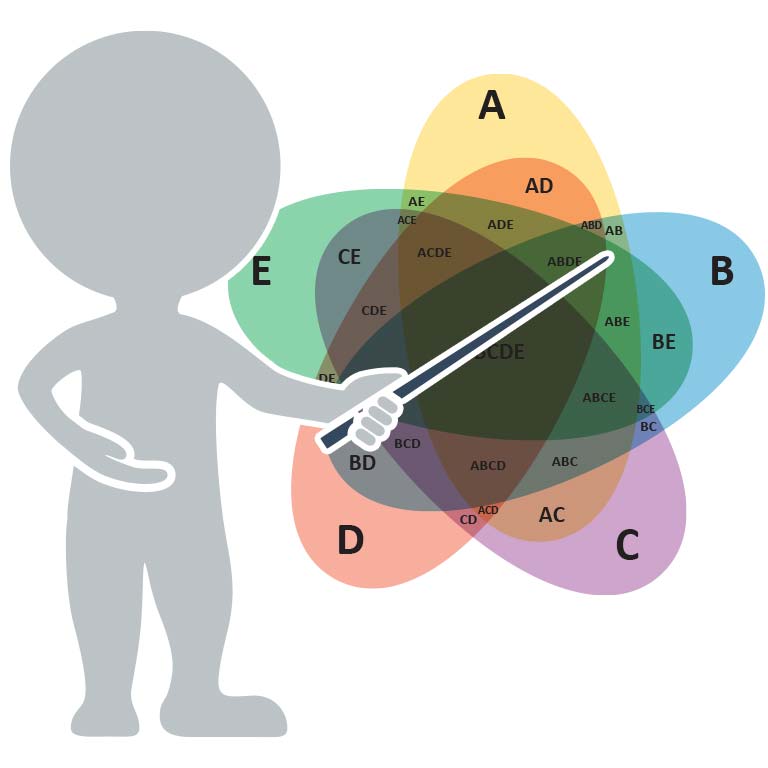Although the average review score was lower than in 2004, there was still quite a bit within the 2005 Orchestra Website evaluations worth singular attention. In this year’s installment, orchestras will receive special recognition per evaluation category…
Special Recognition By Category
The 2005 Orchestra Website Review evaluations are broken down into five categories, each with several subcategories. Although an individual orchestra may have had an overall low score that certainly doesn’t imply that they didn’t do a particularly good job at satisfying the requirements of any individual category or any of its subcategories.
As such, this area of recognition is to help promote what orchestras are accomplishing and promote them as benchmarks of comparison for other orchestras to evaluate.
Category 1: Performance Schedule
Although this was one of the highest scoring categories among all orchestras, there were a few websites that stood out among their peers. In particular, the Detroit Symphony Orchestra had one of the best examples of how to implement a concert calendar right on the front page of their website. Their recent redesign obviously takes advantage of some of the better technological capabilities currently available to web designers. For example, not only do they have a concert calendar with easily defined performance dates on the front page, but if you simply drift over one of the performance dates with your mouse, it changes the concert information (which by default displays the most recent upcoming concert) immediately to the right of the calendar so you don’t have to go to another page to learn about the concert.
In general, sites which didn’t overload users with information were easier to navigate, allowing those who are in a hurry to find a concert and purchase tickets to do exactly that. The Chicago Symphony, Columbus Symphony, and Shreveport Symphony are good examples of how orchestras of varying budget size can maintain a front page which provides immediate information about upcoming concerts without overloading users with a multitude of peripheral information.
Category 2: Purchasing Tickets
Once the users have found the concerts or subscription packages they are looking for, they need to be able to make purchases quickly and securely with as little confusion as possible. Without a doubt, the orchestra which exemplifies how to accomplish each of these requirements is the Minnesota Orchestra. The link to buy single tickets from each concert page is clearly visible and the pages always loaded without delay. Once on the purchase page you were provided with information as to whether or not any sections were already sold out or if any special ticket price offers were available. Their subscription series purchase page provides you with a prominently displayed and concise privacy statement which includes a direct email link so you can opt out of any unwanted marketing endeavors.
Subscription packages can be confusing; there are too many examples of how orchestras make the process of selecting subscription packages more frustrating than it already is. Fortunately, websites like theColumbus Symphony make the enterprise simple via a colorful, easy to understand and navigate subscription package navigation configuration available right on the home page (which doesn’t simultaneously detract from looking for upcoming concerts). Providing a useful seating chart is something most orchestras apparently overlook as this was among the lowest average scoring subcategories in the entire review. Given the fact that orchestras are doing everything they can to attract new audiences, one of the most useful components of a website is to let newer ticket buyers know as much as possible about the experience their purchase will offer them. Why so many orchestras only provide a traditional top down or overly simplistic blocky 3D rendering for seating charts is beyond me. Most of the bigger budget orchestras or organizations offer a seating chat feature which allows users to see what the vantage point from their seating area will like. Even so, advancements in basic web design technology can allow budget conscious orchestras to easily take advantage of this capability. For example, the Austin Symphony, allows users to see the vantage point from their section for performances in Bass Hall via a simple to install mouse-over behavior with a traditionally rendered seating chart.
Of course the top of the line feature is to provide users with a panoramic view of the entire hall from each seat, but only a handful of orchestras offer such a feature so far. One intriguing example is at the National Symphonywebsite, which even provides users with panoramic views of lobbies and anterooms.
Category 3: Orchestra Information
Once newer patrons undergo a few positive concert going experiences, they are bound to become curious about the musicians and other individuals who make the concerts a reality. Patrons need to have avenues to become involved with the organization so they can build a sense of ownership and civic pride around their respective ensembles. Nearly every orchestra provided ample information about their conductors but providing even basic information about the musicians was something most orchestras lacked. Nevertheless, for the second year in a row, the best example of providing information about musicians is at the Oregon Symphony. The multitude of techniques they use to present the musicians to their community is a benchmark for how every other orchestra in the country should feature their artists.
One of the next subcategories was finding contact information for administrative personnel; all you need are names, telephone extensions, and email addresses. This may seem like a simple task but for a number of orchestras, this is apparently quite difficult. Only 30% of the orchestras met all three qualifications and 15% only offered a text list with no contact information listed at all. The Long Beach Symphony is a good example of how a smaller budget size orchestra can facilitate all three components of contact information and the Charlotte Symphony has a clean, simple page which provides everything you need in one location. If orchestras are going to be successful at moving their product back into the mainstream cultural consciousness, they’re going to have to do a better job of attracting media attention. As such, one of the new subcategories for 2005 was evaluating a website’s press page. A good page should provide easily found contact information for PR representatives, a list of current and archived press releases, plenty of downloadable pictures and biographical information about guest artists, resident artistic personnel, and contact information for the musicians’ spokesperson. Although none of the orchestras met all of the criteria, some of the better representative examples were found at the Baltimore Symphony and the Nashville Symphony.
Category 4: Making Donations
Orchestras need donations, without them they simply can’t survive. Given this fact it is essential that every orchestra provide some method for patrons so they can make secure donations directly through the website. The proliferation of honorable, third party sources such as donate.net and networkforgood.org allow even the smallest budget orchestras who don’t have e-commerce ability to take advantage of immediate online donations. Unfortunately, this was the second lowest scoring category for the 2005 review. 33 out of 80 orchestras had absolutely no ability to make donations online whatsoever, and out of the 47 who did offer the ability, only 24 of those had any notice about the transaction being secure (see The Best & The Worst of The 2005 Orchestra Website Review coming out on 9/20/05 for more details).
If an orchestra did allow online donations, they were then evaluated on how many options they provided users. Orchestras like the Pacific Symphony and the Oregon Symphony allow patrons to make donations in installments. In addition to installments, the Chicago Symphony allows donors to the option to set up matching gifts, decline tax deductibility benefits and more.
Category 5: Content & Functionality
Once an organization has figured out what it’s going to present to the public on its website it has to take the time to figure out how to do it, and that’s where this category comes into play. Although there are still too many examples of poorly designed navigation architectures (always changing navigation structure, hidden links, bad links, etc.), more than half of the orchestras who scored below 50% in this category in 2004 improved their scores. The best example of how an organization can take a significant amount of information and make it easy to navigate (in all directions) is the Chicago Symphony. They utilize a tried and true method of a simple text oriented left hand navigation column with categories that use expanding submenus. The expanding submenus don’t overlap with page content nor do they interfere with other navigation categories. Just in case “easy” isn’t simple enough for their users, they provide a set of static links on the top right hand portion of their page banner which allows patrons to view a site map or conduct a site search.
Another subcategory which saw a noticeable increase over 2004 was the number of unique offerings orchestras presented users. Groups like the Boston Symphony, Dallas Symphony, Minnesota Orchestra, Pittsburgh Symphony, Oregon Symphony, San Francisco Symphony, Seattle Symphony, and Toledo Symphony all had a number of unique features which helped them identify with their communities. A number of those unique offerings will be examined in the The Best & The Worst of The 2005 Orchestra Website Review coming out on 9/20/05. An additional subcategory for 2005 is how well orchestras provide for “Institutional Transparency”. This subcategory granted points based on whether or not an orchestra provides downloadable copies of their annual report and if they provide copies of or links to their IRS Form 990 records. In an environment where most orchestras are approaching existing donors on an increased basis for contributions, those donors need to have confidence that the organization will mange their gifts appropriately. Sadly, this was the single lowest scoring subcategory for the entire review. The average score was a disappointing .58 out of a possible 10. Only eight orchestras earned points in this category and of those, only the Pittsburgh Symphony earned 10 out of 10 points.
Back to the 2nd Annual Adaptistration Orchestra Website Review main page.



Choosing your seats on the web: Some ticket purchasing systems (perhaps these are the ones run through tickets.com) make a point of telling you that they are selecting the very “best” seats in your price range: these seem to be on the main floor, as far forward as possible. But I like to sit upstairs, and probably most people prefer the middle of the floor rather than the very front (at least the seats are usually priced that way).
PK,
More good points, you’re absolutely correct that some box office software packages say they select the “best seat” for you (which is completely junk in my opinion). allowing ticket buyers the ability to select which individual seat was part of the grading criteria for the review.
Good site